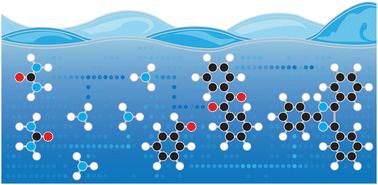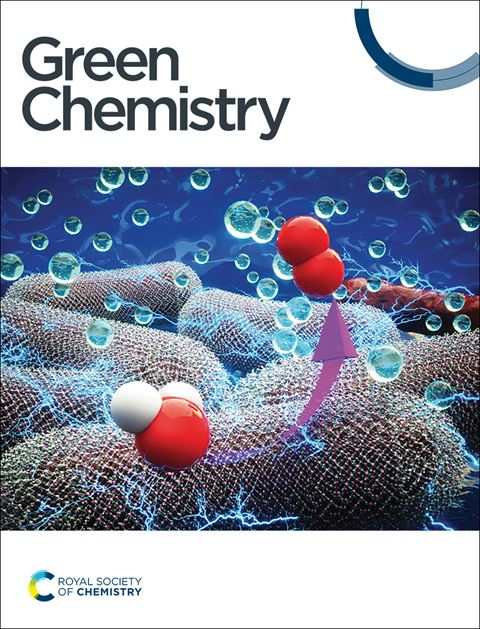High-temperature water unlocks urea as nitrogen-source towards imidazoles†
IF 9.3
1区 化学
Q1 CHEMISTRY, MULTIDISCIPLINARY
引用次数: 0
Abstract
Urea is a non-toxic, harmless, and abundant bulk organic chemical featuring high nitrogen content. Therefore, urea could be a prime green candidate for introducing nitrogen atoms into organic molecules. In this regard, urea in organic synthesis has been mainly employed as building block, component of solvent systems, catalyst, or for pH adjustment, while uses of urea as NH3-source towards the construction of small organic compounds are scarce. Here, nothing but high-temperature water (HTW) is employed to conduct the aquathermolysis of urea, generating NH3 to propel the Debus–Radzsisweski multicomponent reaction (MCR) towards imidazoles. The approach does neither require additional catalysts nor reaction auxiliaries or volatile organic compounds as solvent. Urea was used as N-source in combination with different 1,2-diketones and aldehydes featuring a variety of functional groups towards 23 lophine analogues (190 °C, 1–3 hours). Moreover, the presented synthesis performs equally or better than classical syntheses when acid-sensitive substrates are employed. The greenness of the synthesis using urea in HTW was assessed through green metrics and compared with syntheses reported in the literature in a large-scale fashion. Overall, the reported syntheses feature E-factor and process mass intensity values in ranges comparable to those of syntheses reported in literature.

高温水释放尿素作为咪唑类化合物的氮源
尿素是一种无毒、无害、丰富的大宗有机化学品,具有含氮量高的特点。因此,尿素是将氮原子引入有机分子的主要绿色候选物质。在这方面,尿素在有机合成中主要用作构件、溶剂系统的组分、催化剂或调节 pH 值,而将尿素作为 NH3 源用于构建小分子有机化合物的情况则很少见。在这里,只用高温水(HTW)来进行尿素的水热解,产生 NH3,推动 Debus-Radzsisweski 多组分反应(MCR)生成咪唑。这种方法既不需要额外的催化剂,也不需要反应助剂或挥发性有机化合物作为溶剂。以尿素为 N 源,结合不同的 1,2-二酮和具有各种官能团的醛,可合成 23 种洛芬类似物(190 °C,1-3 小时)。此外,在使用对酸敏感的底物时,所介绍的合成方法与经典合成方法的性能相当,甚至更好。通过绿色指标评估了在 HTW 中使用尿素进行合成的绿色程度,并与文献中报道的大规模合成进行了比较。总体而言,所报告的合成的 E 因子和过程质量强度值范围与文献中报告的合成相当。
本文章由计算机程序翻译,如有差异,请以英文原文为准。
求助全文
约1分钟内获得全文
求助全文
来源期刊

Green Chemistry
化学-化学综合
CiteScore
16.10
自引率
7.10%
发文量
677
审稿时长
1.4 months
期刊介绍:
Green Chemistry is a journal that provides a unique forum for the publication of innovative research on the development of alternative green and sustainable technologies. The scope of Green Chemistry is based on the definition proposed by Anastas and Warner (Green Chemistry: Theory and Practice, P T Anastas and J C Warner, Oxford University Press, Oxford, 1998), which defines green chemistry as the utilisation of a set of principles that reduces or eliminates the use or generation of hazardous substances in the design, manufacture and application of chemical products. Green Chemistry aims to reduce the environmental impact of the chemical enterprise by developing a technology base that is inherently non-toxic to living things and the environment. The journal welcomes submissions on all aspects of research relating to this endeavor and publishes original and significant cutting-edge research that is likely to be of wide general appeal. For a work to be published, it must present a significant advance in green chemistry, including a comparison with existing methods and a demonstration of advantages over those methods.
 求助内容:
求助内容: 应助结果提醒方式:
应助结果提醒方式:


